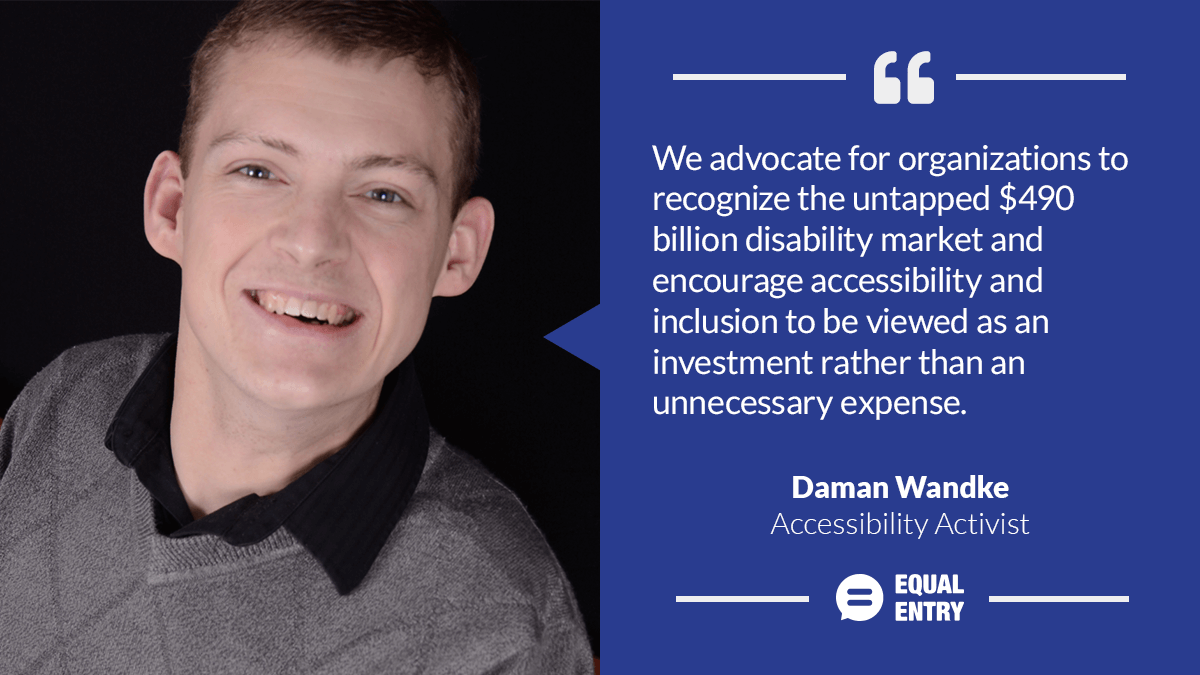Summary

With a lifelong passion for Disability Advocacy, entrepreneur Daman Wandke has ten years of experience testing IT Accessibility in the public and private sector. He has worked with small local businesses to multinational corporations ensuring that people with disabilities have equal access to websites and mobile apps. In addition to providing access to the digital world, Daman also educates audiences by spreading awareness about disability issues.
How did you get your start in accessibility?
As a person with Cerebral Palsy, being an advocate for accessibility has always been a part of my life. When I entered college, I knew I was interested in technology and accessibility. One of my first internships was at the US Department of Agriculture where I was introduced to PDF accessibility. That internship was the start of a career that has always been centered around accessibility.
I have worked for many federal government agencies on website accessibility. When I graduated college, I was hired by SSB BART Group (now Level Access), a large IT accessibility consulting company. That experience gave me the opportunity to work with a variety of clients to solve their accessibility needs.
As part of your work with Wandke Consulting, your team offers inclusive marketing services. How does inclusive marketing differ from traditional marketing and why is it important for your clients?
Traditional marketing is known for not incorporating diversity into its campaigns. This traditional approach excludes many people from seeing themselves utilizing the product or service being offered. Inclusive marketing accurately represents the population by incorporating diversity into marketing materials.
We at Wandke Consulting advocate for organizations to recognize the untapped $490 billion disability market and encourage accessibility and inclusion to be viewed as an investment rather than an unnecessary expense.
As people with disabilities, we understand how the disability community likes to be represented and we share this expertise with our clients. These services include managing social media campaigns, conducting outreach to the disability community through our networks, and helping clients with their inclusive marketing strategies.

What is an accessibility barrier you would like to see solved?
The world needs to understand that accessibility is not “one-size-fits-all.” There is a misconception that access is created by following a cookie-cutter checklist. When the checklist is complete, accessibility is met. This creates a barrier that needs to be solved.
When thinking about physical access, we tend to only think of wheelchair users. When thinking about online accessibility, we tend to only think about people who are blind or deaf. In reality, there is a wide range of needs for both physical and online accessibility.
We need to broaden our focus when looking at accessibility and go beyond the minimum guidelines of a checklist. We need to focus more of our attention on how usable a place or website is to a more diverse range of people.